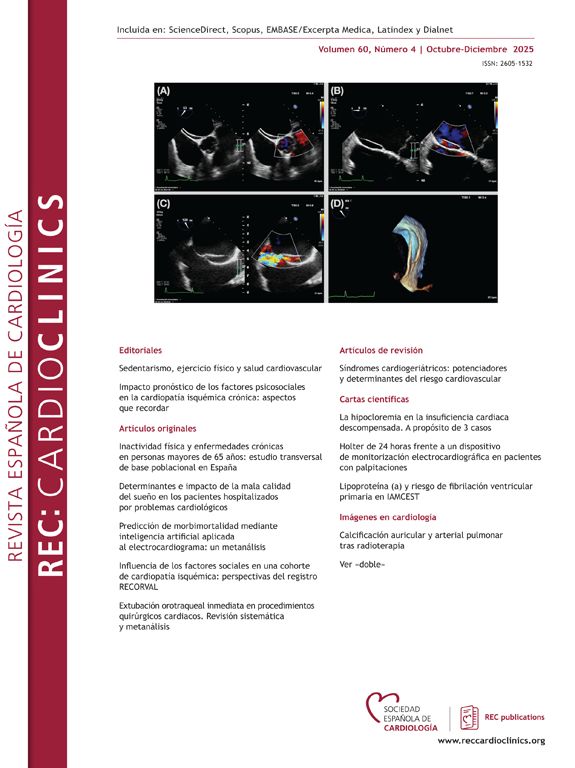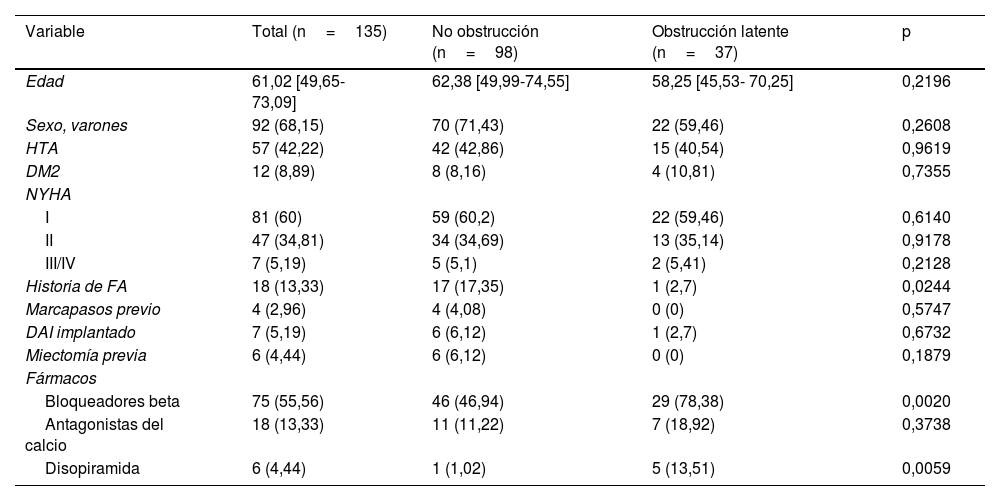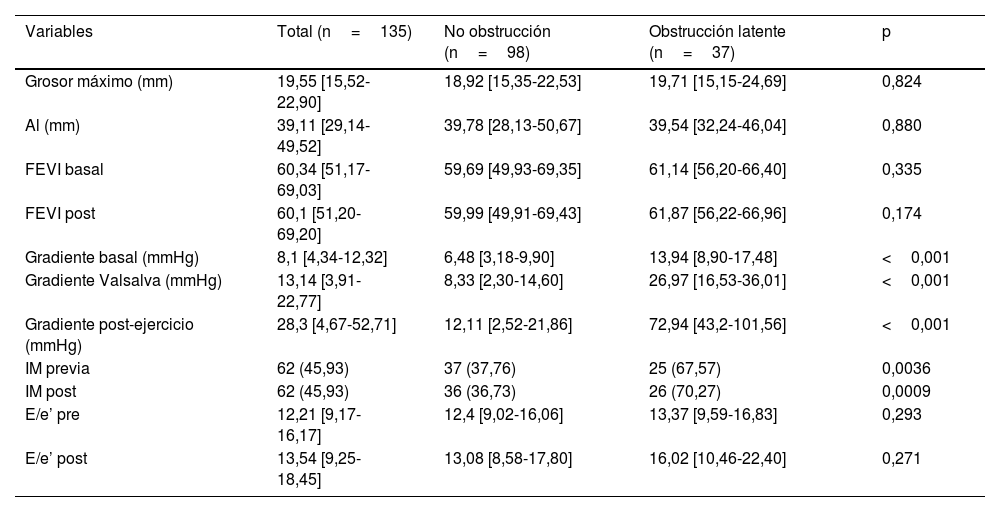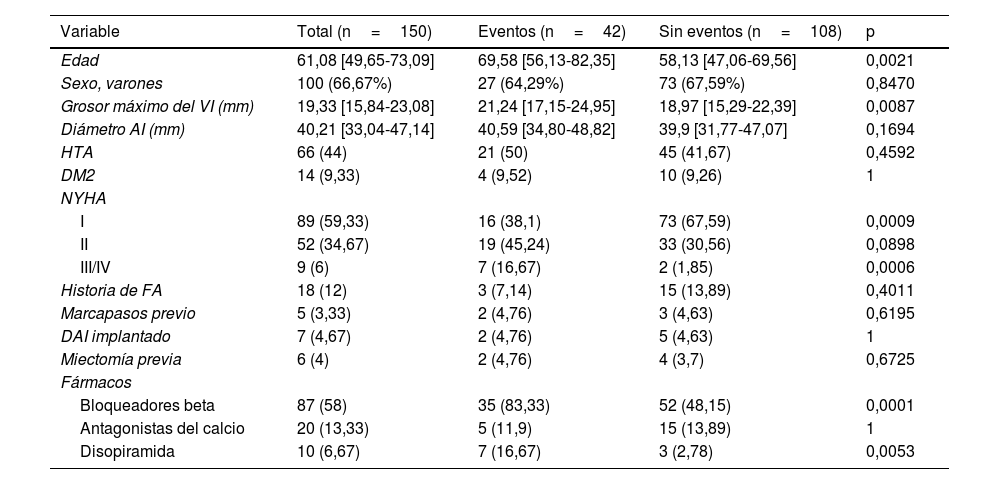Un tercio de los pacientes con miocardiopatía hipertrófica (MCH) presentan obstrucción del tracto de salida del ventrículo izquierdo (OTSVI) en reposo. Sin embargo, un porcentaje importante presenta obstrucción latente. La ecocardiografía de esfuerzo resulta valiosa para descubrir esta obstrucción. El objetivo de este estudio es analizar los predictores de la aparición de OTSVI latente y su implicación pronóstica.
MétodosSe realizó un estudio retrospectivo unicéntrico en 150 pacientes diagnosticados de MCH según los criterios de la Sociedad Europea de Cardiología, a quienes se les había hecho un ecocardiograma de esfuerzo. Se recopilaron datos demográficos, clínicos, ecocardiográficos y eventos adversos a largo plazo. Se compararon las características de los pacientes con y sin obstrucción latente, y se analizaron los factores pronósticos asociados a eventos graves.
ResultadosEl 9% de la población presentó obstrucción en reposo, mientras que un 24% presentó obstrucción latente. La ausencia de fibrilación auricular, el uso de bloqueadores beta o disopiramida y un gradiente basal o tras la maniobra de Valsalva elevado se asociaron a la aparición de obstrucción latente. No obstante, ni la obstrucción latente ni la magnitud del gradiente se relacionaron con eventos adversos. El peor pronóstico se asoció a más edad, mayor grosor ventricular, clase funcional de la New York Heart AssociationIII yIV y uso de bloqueadores beta o disopiramida.
ConclusionesLa ecocardiografía de esfuerzo es un método seguro y útil para detectar obstrucción latente en pacientes con MCH. Aunque el gradiente inducido no se correlacionó con el pronóstico, identificarlo podría mejorar la evaluación global del paciente.
One-third of patients with hypertrophic cardiomyopathy (HCM) present left ventricular outflow tract obstruction at rest. However, a significant percentage of patients show latent obstruction. Exercise echocardiography is valuable for detecting this hidden gradient. The aim of this study is to analyze predictors of latent left ventricular outflow tract obstruction and its prognostic implications.
MethodsWe conducted a single-center retrospective study in 150 patients diagnosed with HCM according to European Society of Cardiology criteria, all of whom underwent exercise echocardiography. Demographic, clinical, echocardiographic, and long-term adverse event data were collected. Characteristics of patients with and without latent obstruction were compared, and prognostic factors associated with severe events were examined.
ResultsResting obstruction was present in 9% of the cohort, while 24% exhibited latent obstruction. Absence of atrial fibrillation, the use of beta-blockers or disopyramide, and an elevated baseline or post-Valsalva gradient were associated with latent obstruction. Neither latent obstruction nor gradient magnitude correlated with adverse events. Worse prognosis was linked to older age, increased ventricular wall thickness, New York Heart Association functional classIII orIV, and use of beta-blockers or disopyramide.
ConclusionsExercise echocardiography is a safe and useful method for detecting latent obstruction in HCM patients. Although the induced gradient did not correlate with prognosis, identifying it could enhance overall patient assessment.
Article
Use datos de acceso a SEC en el menú Acceder.
Si es socio de la Sociedad Española de Cardiología y no puede acceder con sus claves, escriba a rec@cardioclinics.org.
Use the Society's website login and password here.
If you are member of SEC and you have some problems with your login data, please contact with rec@cardioclinics.org.















